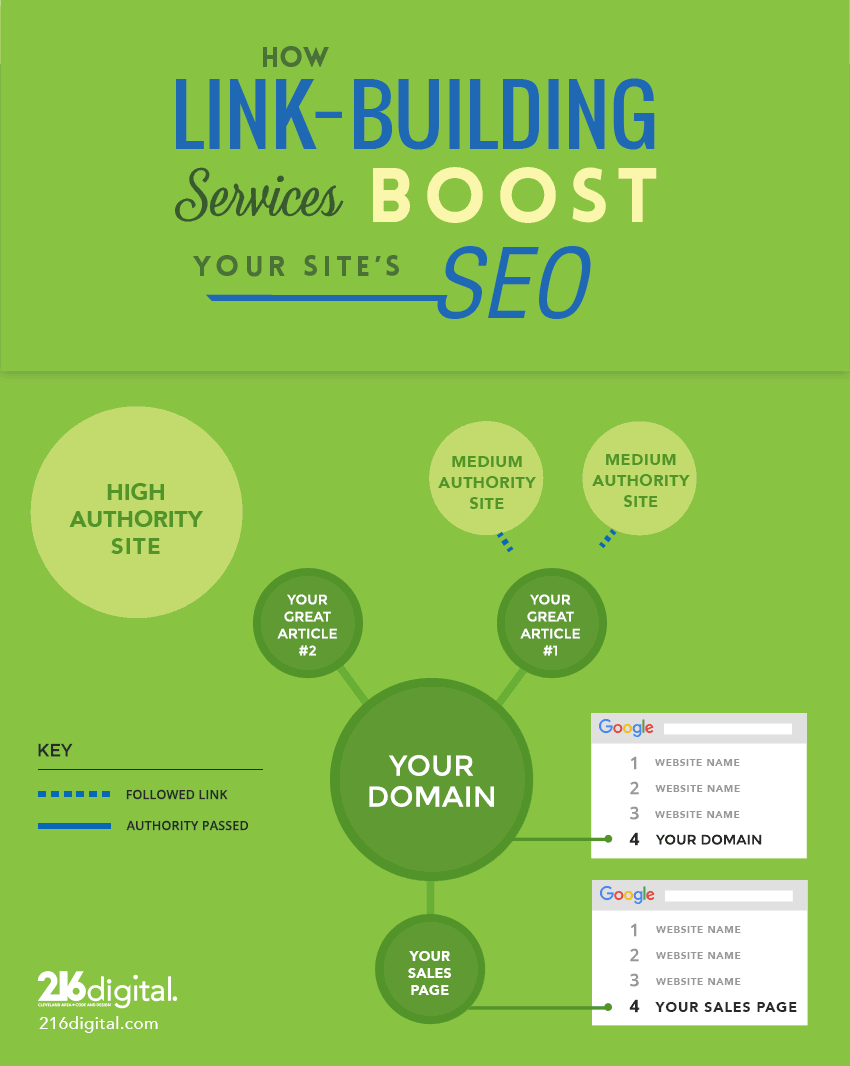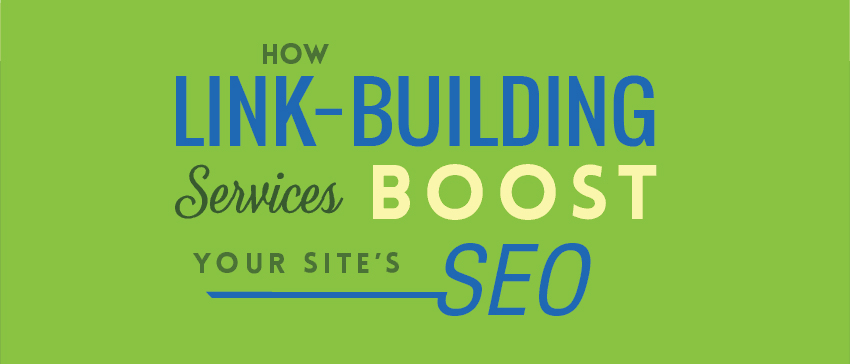The days of rocking SEO with spam links are over. Today’s SEO game is all about building high-quality, high-authority, contextual backlinks.
Google is smarter than ever, and that means webmasters need to get on board. Link-building services ensure that your site publishes great content marketing—the kind of stellar content that publishers in your niche actually want to link to. When your amazing articles and blog posts get high-authority links in your niche and related niches, your overall domain authority goes up—which means your sales pages (the money makers) start ranking better, too.
Over time, link-building services build real value into your domain. But how does this actually happen? How does “link juice” (the industry term for the authority that Google values) get passed from one website to another?
We’ve answered that question with this animated infographic. Check it out!

Share this Image On Your Site–Just Copy And Paste This HTML Code:
Link-Building Services: Real Links from Legit Websites = Real Results.
How are link building services different from general SEO efforts? Glad you asked. SEO is a broad area of practice that encompasses many elements. Link building is a subset of general SEO efforts, but it’s one of the most important. After Google’s algorithm updates in recent years, white-hat link building is arguably the ONLY legitimate way to aggressively pursue higher rankings in Google search. White-hat link building works because it respects the needs of real human readers—something which the old spammy tactics didn’t do.
We’ve outlined our entire link-building strategy above in one diagram. But what’s happening here? If you’re new to the SEO game, that’s a lot to digest. We’ve broken down the link building process into 7 steps. Read on!
1 – Content Market Research
That’s not a typo. This isn’t only content marketing research, but content MARKET research. You’re entering a content market with its own unwritten rules. You need to know what you’re doing.
Any link building service that’s worth its salt will ground your project in data. That means finding out what types of content are ranking for your keywords already. With backlink analysis tools like Ahrefs and SEMrush, link builders analyze high-performing pieces of content to see who’s linking to them and where they’re ranking.
But this stage of research isn’t only about hard data. The best link builders are also highly-practiced readers and flexible professional writers. They pick up contextual clues and intangible qualities surrounding a content niche, and they file these things away so they can write in the same voice (but even better) when they write for you.
2 – Creative Brainstorming
After all this research, link builders take hordes of data plus intangible clues and start brainstorming topics. The goal here is fantastic content that will delight audiences. The key is knowing how to differentiate between audience types and write for multiple audiences in the same piece—a secret which few link builders will divulge to anyone but their clients.
3 – Writing and Revising
The writing process gives shape to the data findings and creative brainstorming which the link building team has developed. This is where ideas are crystalized into fantastic articles, blog posts, infographics, and more. The best link builders know not to rush this phase, as it can lead to bad copy, typos, and factual errors.
4 – Publication
Believe it or not, this isn’t a simple matter of copy and paste. Depending on the CMS (content management system) settings, a lot of things will need to be reformatted inside the blog editor. For example, an article composed in Microsoft Word, with images included in the copy, can’t simply be copied and pasted over to WordPress. Each image must be uploaded individually through the WordPress media uploader, and each image may need its HTML rendering manually adjusted so the image will resize on mobile screens. Publication is not a stage for skimping, either; no one wants to get partway through promotion and find that an image has broken the layout of the post.
5 – Outreach and Promotion
There’s an old saying: “the publish-and-pray approach is dead.” That’s more true than ever. As writers and marketers ourselves, we believe that a piece of content only deserves as much effort in creation as it will receive in promotion. A great piece of content is dead in the water without a plan to expose it to the audience that will eat it up.
Here’s where initial research of your content market comes in handy again. With all the research you did, you should have a vast list of webmasters, bloggers, and publishers who will be interested in your content. If you did your research right, this list is promotion gold. Of course, the list alone isn’t enough to guarantee success. You have to talk the talk. Professional link builders are quick at picking up the feel of a particular discourse space, and they’re also well-versed in best practices that ensure their emails get opened, read, and replied to. No step can be the most important step, but outreach is pretty darn close to that.
6 – Incoming: LINKS!
It’s true. If the content marketing strategy was executed properly from the beginning (including such stages as link creator research, topic research, and outreach communication style), your content pieces will actually get links. Real, contextual, high-value links from sites within your niche and related niches.
7 – A Rising Tide Raises All Ships… Generally… With a Caveat.
When links are distributed fairly evenly across a good number of articles and pages on your site, your domain authority will go up. Domain authority is one of the biggest factors Google considers when assembling rankings. However, note that links to a page don’t always equate with a higher domain authority. Too many links to one page alone, and Google will see that page as having more value than your domain as a whole. This is not necessarily a problem, especially if that page is the most important part of your website; however, in this situation, the concentration of links to that page will not help raise your overall domain authority as much as a distributed link profile will.
The Bottom Line
Link building services are the ultimate SEO strategy for the white-hat world. White-hat link building works, and it directly improves your SEO when it’s done right.
However, it’s not a simple solution. Researching a content market, writing high-value content, and maintaining relationships with link creators in your niche is an ongoing, time-consuming process. Many companies see great value in outsourcing their link building needs. At 216digital, Inc., we practice white-hat link building for a wide variety of clients. You can learn more about our white-hat link building services here.

